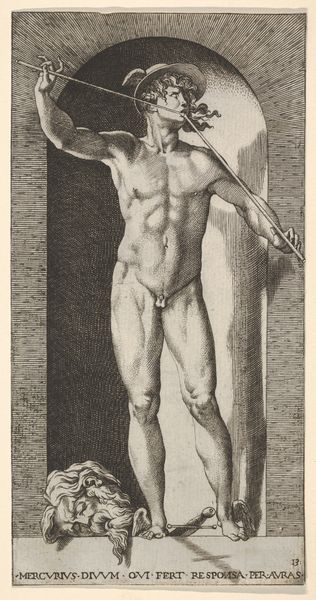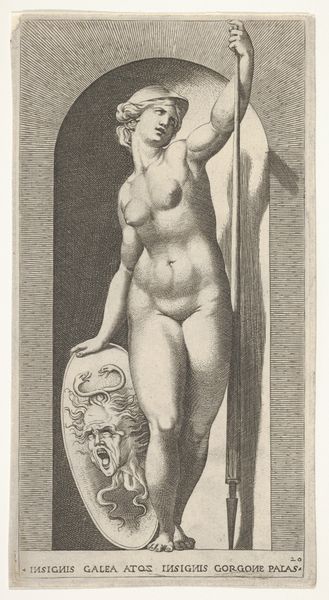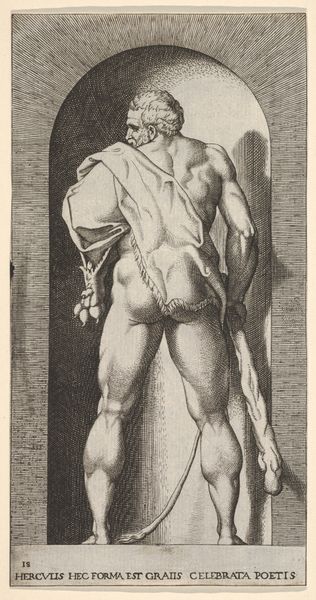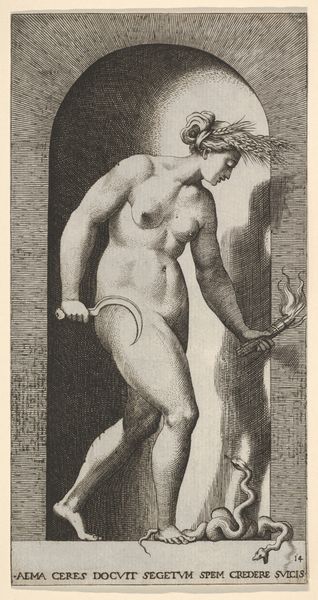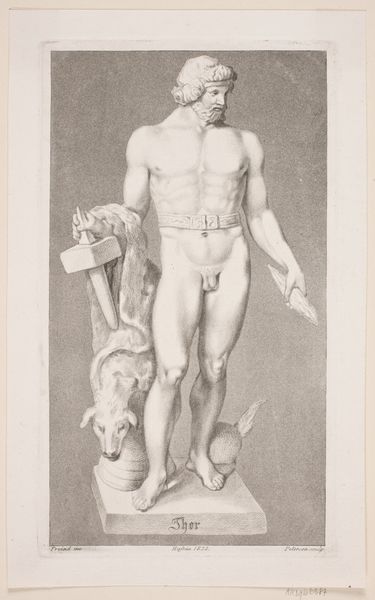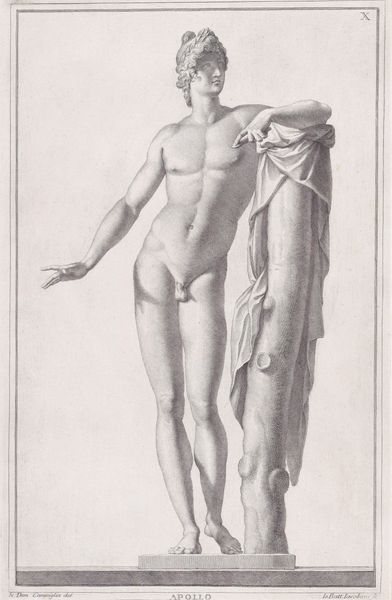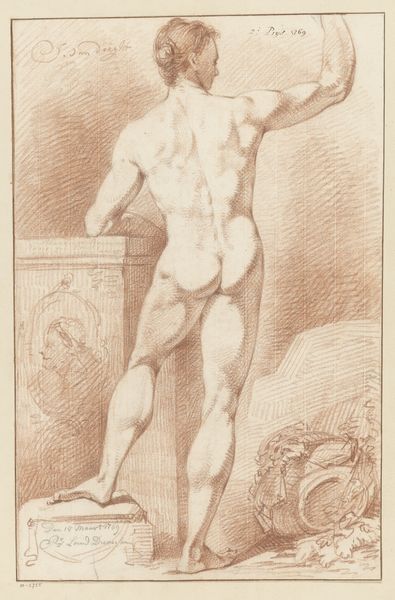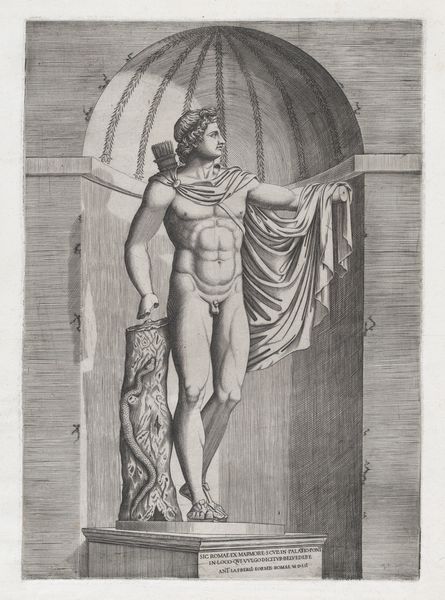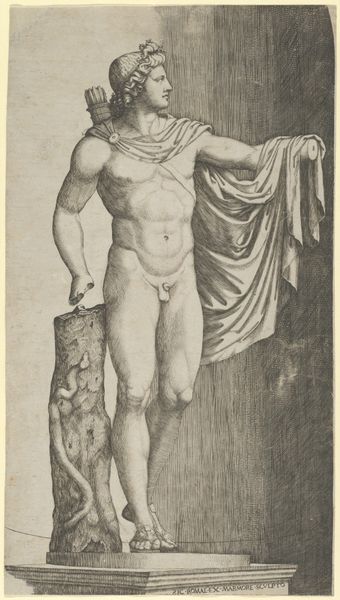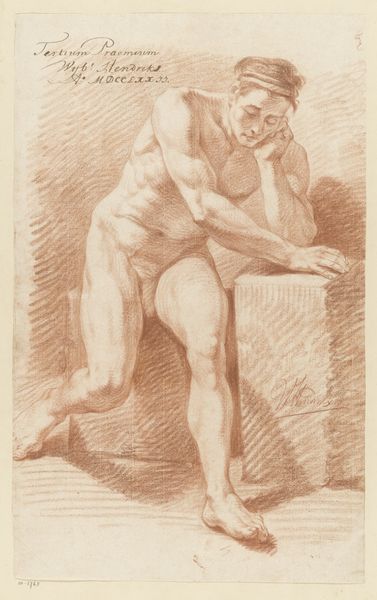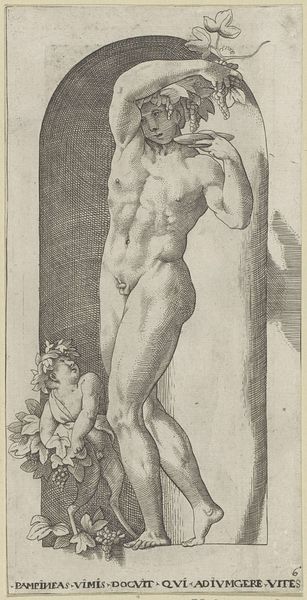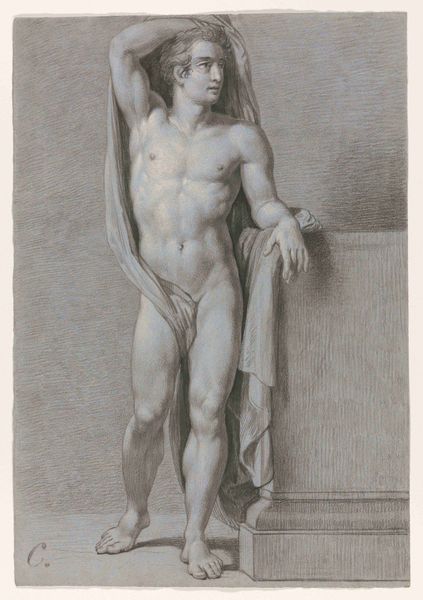
Plate 17: Bacchus standing in a niche, holding grapes over a plate, accompanied by an infant satyr, from a series of mythological gods and goddesses 1526
0:00
0:00
drawing, print, engraving
#
drawing
# print
#
old engraving style
#
figuration
#
11_renaissance
#
history-painting
#
italian-renaissance
#
nude
#
engraving
Dimensions: Sheet: 8 11/16 × 4 1/2 in. (22 × 11.5 cm) Plate: 8 7/16 × 4 5/16 in. (21.4 × 11 cm)
Copyright: Public Domain
Editor: Here we have Giovanni Jacopo Caraglio’s engraving, “Bacchus standing in a niche…” from 1526. It's currently held at the Metropolitan Museum of Art. My first thought is that Bacchus looks surprisingly serious. I’m used to seeing him portrayed with a sense of joviality. How do you interpret this work? Curator: Indeed. Though this rendering of Bacchus doesn’t exude his signature ecstatic frenzy, it resonates powerfully with his association with cyclical renewal. Consider how the grapes he holds are both fruit and a symbol of fermentation, a transformation, carrying a host of implications surrounding the human experience. Note the satyr, both man and animal. What stories of cultural memory and psychological depths does this pairing evoke for you? Editor: The duality of transformation and nature... it is also very Roman. Given it's from the Italian Renaissance, how much would the original viewers have understood or cared about those classical roots and symbolisms? Curator: Immensely! The Renaissance was, in essence, a rediscovery of those roots. Each vine, each leaf, whispers echoes of ancient rituals, of altered states and communion with nature. Think about the tradition of the Roman Bacchanalia, or Dionysian festivals, which are celebrations of liberation and abundance. In this, there's not a feeling of hedonism, but a sense of divine power. The artist evokes the symbolic language of antiquity for a knowing contemporary audience. Editor: That’s really interesting. So even though the depiction seems stoic, the context gives it a layered, almost hidden depth. It highlights not just classical knowledge, but its enduring influence, as the vines connect through generations! Curator: Exactly. Each viewing across time adds new layers. It seems, Bacchus continues his eternal harvest through the very act of interpretation!
Comments
No comments
Be the first to comment and join the conversation on the ultimate creative platform.
